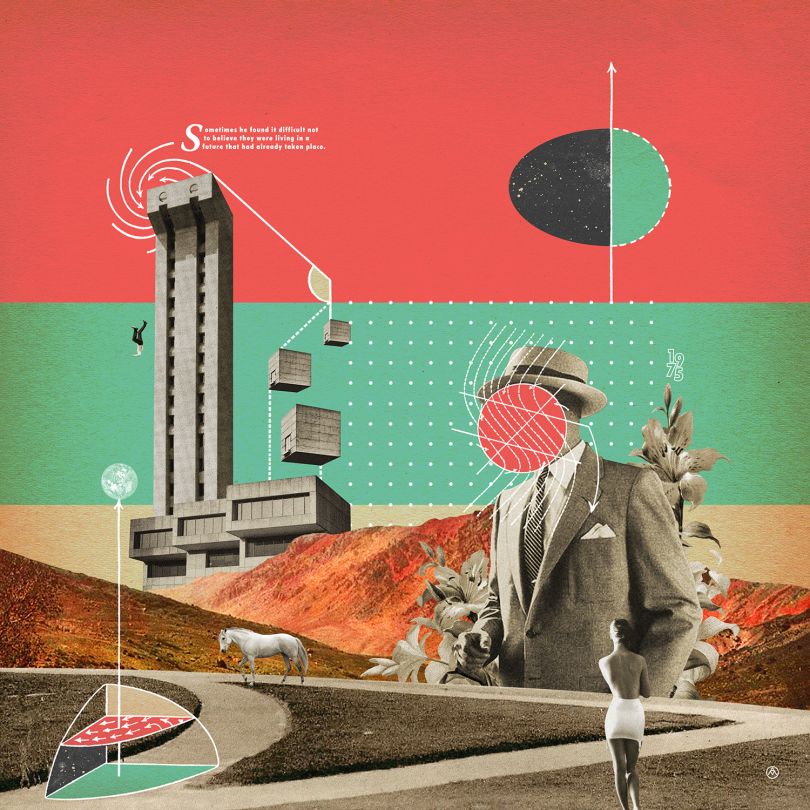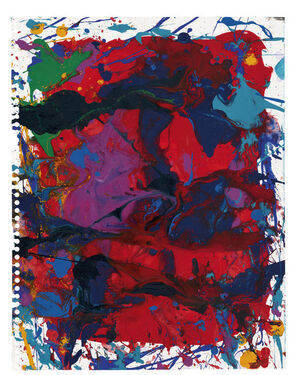
Material culture is the accumulation or preservation of artifacts, objects, and other artifacts. Humans have been creating objects for thousands of years. These objects provide evidence of our experiences. Humans have used these objects to communicate with and express themselves. Certain artifacts are more valuable than others. They are the core of a culture's identity. A material culture has a rich history stretching back over ten million years.
There is physical evidence that human experience has been experienced
Material history, or material culture, refers to the study and analysis of ancient objects. Material objects are often symbolic representations for abstract objects, with no apparent connection to the object itself. Anthropologists assert that humans possess a universal ability for encoding and classifying experiences symbolically. This ability was not dependent on biological evolution. An analysis of ancient artwork reveals that humans were capable of creating and using symbolic systems. These systems were formed by their experiences.

Culture-created objects
In its broadest meaning, material culture is any activity that makes cultural activity visible through physical form. This can be anything from artifacts and relics to textiles and buildings. On a larger scale, material culture can include cuneiform tablets, bridges, irrigation ditches, fences, and landscapes. Its reach is extensive and evolves over time, due in part to the symbolic and material expressions that it generates.
Symbolic interaction
The paradigm of symbolic interaction in material culture is a research method that studies the nature and dynamics of self and social interaction. This framework is especially useful for studying the cultural and spatial fields. According to the theory, our behavior is determined primarily by how we interact with objects. We also learn meanings from these interactions through an interactive interpretive process. These are the key characteristics of symbol interactionism in material cultural. We must first understand the nature of self in order to understand symbolic interactionism in these areas.
Symbolic anthropology
Symbolic ananthropologists consider culture a system of meanings, which are used for adaptive purposes. These meanings could be expressed in arbitrary ways, such symbols, or they might take on concrete forms, such symbols that are etched into artifacts. Symbolic systems developed independently of biological evolution, and they enable human beings to learn from other people. This capability is in direct contradiction to the Nature versus Nurture argument.

Symbolic archaeology
Symbolic archaeology is the study of the recurring assemblage of objects, tools, and symbols from a particular time and place. While there is no written record of ancient civilizations, archaeologists can draw inferences from their everyday lives using physical artifacts. In addition to material remains, archaeologists use written history, oral traditions, and direct observations. Symbolic archaeology, a subfield of anthropology, is a branch.
FAQ
What can pop-culture teach us?
Our society today is more concerned with material goods than everything else. This is especially true of young people. They spend hours per day looking at screens. They look at screens and watch videos, as well as play video games and surf the Internet. All this distracts them and makes it difficult to focus on school work. They end up failing classes as a result.
Everyone wants to fit in. That means being popular. Popularity is dependent upon having money, clothes and other possessions. This can lead to some people doing things that aren’t right.
We have become too dependent on technology. Technology has given us access to all kinds of information. Not everything is accurate. There are many false rumors floating around the Internet. These rumors spread quickly because people share them on social media sites. It is easy to share something without verifying its truth.
People have lost their ability to think critically. People believe everything they see on the Internet. They believe everything they read in magazines and on television. They stop thinking for their own sake. Instead, they follow the crowd.
We lose control when we rely on other people to tell us what's up. Pop culture teaches that we should depend on other people. It also makes us lazy. While the truth is often out there, we don't always know it.
Are Tik Toks pop culture?
Yes! This is not only for teenagers. These videos can be used by anyone to express their feelings, share life moments, and show support.
Over 200 million people are using the app daily around the world. This number continues to grow by millions every single day.
TikTok offers brands a unique opportunity to connect with consumers and establish meaningful relationships.
TikTok is also home to many influencers who have built massive followings on the platform. These creators create original content that engages audiences across the globe.
Don't wait! Here are four methods to capitalize on this trend.
-
Create Viral Content
-
Engage Influencers
-
Use Visuals Effectively
-
Get creative with your audience
How did pop culture develop?
Technology was the driver behind the growth of popular culture. It developed as people became increasingly mobile. The radio was the first to allow mass communication. This was the beginning of television, which eventually led to the birth of the internet.
People started using computers at home and were exposed to computer games. These games were originally played on consoles like Sony Playstation 3 or the Nintendo Wii. They are now free to download online. Many young people now prefer video games to watching television.
Video games are very popular with children and teenagers. These games can be played by one person or with others via the internet. Games like Call Of Duty and Grand Theft Auto are extremely violent. Some parents worry about their children playing these games. Others find it thrilling to watch what happens when one of their characters dies.
Music videos are another way that pop culture influences youth. They feature celebrities and information about current trends. These celebrities are a favorite of young people. It's obvious that music is a major part of our lives.
Music videos are often created by artists who use special effects to enhance their songs. To make their appearance more attractive, rappers may wear makeup or wigs. To show off their bodies, some musicians are willing to put themselves through extreme physical hardships. Many singers sing while wearing costumes.
Today, there's so much choice in music. You can find any type of music that you desire. This is not always good news. Sometimes music can encourage violence. People can get upset when they hear certain lyrics or words. Sometimes, they even commit criminal acts.
This happened recently with rapper 50 Cent. One line in his song Get Rich Or Die Trying says: "I'm going after a motherfucker / But I don't know how, but I might." This song was thought to mean that he would murder someone. A man threatened to kill him, and called him. 50 Cent changed the lyrics. Now it only says: "I'll shoot a bitch down/ I don't know why but I just may."
Popular culture is essential. It's important that we understand how it affects and impacts us. If we don't, we won't be able to protect ourselves against its adverse effects.
How can we avoid falling prey to the temptations of pop culture?
First, we should recognize when pop culture is influencing us. Then we need to make sure that we're not influenced by it. Here are ways to help you stay away from bad influences:
-
Avoid watching Game Of Thrones and other violent shows.
-
Spend no time surfing the Internet. Instead, read books.
-
Watch less television. Spend your free time doing healthy activities.
-
Take care what you post online. Once comments are posted, you cannot delete them.
-
Make sure that any websites you visit are safe. Check them before you enter personal information.
-
Do not let anyone pressure or make you do dangerous things.
If you see yourself becoming addicted to pop culture, talk to an adult who will help you. Call your local library (1-800-883-THE-LOST) or the National Center for Missing & Exploited children (1-800-THE-883-LOOK).
What examples are there of pop culture?
Pop Culture is a 21st-century art form. It includes all types of entertainment including music, film TV, videogames, fashion and advertising. The term was first used by Neil Postman in his 1985 book Amusing Ourselves to Death. He defined "pop" as a style of mass communication that uses cheap tricks and formulaic devices to create an illusion of spontaneity and uniqueness.
He did however point out that most people don't feel genuine enjoyment because they are trained to seek media experiences which make them feel superior. In addition, he argued that this type of cultural expression had contributed to the loss of critical thinking skills among young adults.
Pop culture is sometimes also called popular culture, consumerism, or pop culture.
How do I use pop culture in my marketing strategy?
It is important to study the trends to see how pop culture can be used in marketing strategies.
Let's take, for example, the promotion of a new movie. What type of promotion could you offer?
You can create a trailer by using clips from your film. You can even find clips that feature your products and services to include in your trailer.
Or perhaps you could create a parody version of the trailer using other famous films.
You can use the movie's plotline as a basis for your promotional campaign, if you are promoting a product/service related to that film's theme. For instance, if the movie is set in outer space, you might want to advertise a product that helps astronauts stay healthy while traveling through space.
You could do promotions based upon the plotline of a business related to the movie's subject. You could, for example, offer food samples to customers who purchase tickets to the movie.
What is music's popular culture?
Popular Music Culture is a constantly-changing phenomenon that comes in many forms.
The use of certain music styles (e.g. jazz, rock) and lyrics is what defines popular music culture. It also covers the influence of visual media like film, television, fashion advertising, and so on, on artists' careers as well as public perception.
It's also all about how fans interact their favorite artists.
Popular music culture has one element: the rise of "superstars", artists who have gained fame and fortune.
These superstars often transcend genres and become cultural icons, and their popularity has influenced the evolution of popular music itself.
Other elements of popular music culture include:
* The rise in recording technology - from acoustic instruments, to electric guitars, and microphones.
* The invention of the record player and the radio;
* The dawn of rock 'n' roll;
* The introduction TV and film
* The birth of MTV/VH1;
* The creation or the Internet.
Statistics
- Latinos represent roughly 19% of the U.S. population. (npr.org)
- Yet a Nielsen study shows they account for 42% of the country's most-watched content on streaming services. courtesy Nielsen (npr.org)
- According to Dictionary.com, popular culture, or low culture as it is sometimes referred to is comprised of the “cultural activities or commercial products reflecting, suited to, or aimed at the tastes of the general masses of people” (7/21/19). (socialsci.libretexts.org)
- According to Kathryn Sorrells (2013, pp. 142-144), there are several ways that we can become informed consumers of popular culture. (socialsci.libretexts.org)
- For example, the term hater meaning someone who strongly undermines or criticizes others, often due to pathetic jealousy, likely emerged from hip hop culture, such as the term playa hateras, used by influential rapper Biggie Smalls as early as 1995. (simplicable.com)
External Links
How To
What are some of the most famous pop culture references you can think of?
Americans were obsessed about space travel during the 1960s. Star Trek was then the most popular television show.
From 1966-1969, the original series aired at NBC. It featured William Shatner in Captain Kirk, Leonard Nimoy in Mr. Spock, DeForest Kelley playing Dr. McCoy and James Doohan playing Scotty. Majel Bart Roddenberry played Uhura. Nichelle Nichols played Lieutenant Nyota Uhura. Walter Koenig portrayed Pavel Chekov. Grace Lee Whitney acted as Yeoman Janice Rand. (Wikipedia)
The first feature film made from the series' story was released in 1967. Paramount Pictures released the film, titled "Star Trek." Robert Wise directed the film, which featured an ensemble cast, including William Shatner (Leonard Nimoy), DeForest Kelley (James Doohan), Walter Koenig and Majel Barrett. Roland Nichelle Nichols. George Takei and Grace Lee Whitney. (Wikipedia)
The second season of the TV series started airing in 1968. The crew traveled back in time to 1969 for this season. (Wikipedia)
A few years later, in 1971, the third season of the television series started airing. This season introduced a new character called Commander Richard A. Morn. He was a Starfleet starfleet officer, who was born on Earth in 2063. (Wikipedia)
"Star Trek: Planet of the Apes", a live action spinoff was also available during this time. It aired on the air between 1972 and 1974. (Wikipedia)
In 1973, the fourth season of the television series debuted. This season introduced two new characters named Lt. Ilia and Ensign Ro Laren. Marina Sirtis played them both. (Wikipedia)
The fifth season of the television series was broadcast in 1975. It was the last series to air before the franchise went out of business. (Wikipedia)
After the television series was cancelled, numerous attempts were made at its revival. Some of them included the 1977 pilot episode "Where No Man Has Gone Before" which was not able to find a studio or network partner. (Wikipedia)
Star Trek: New Voyages also aired as an animated series in 1998. It lasted just 13 episodes. (Wikipedia).
In 2009, the sixth season of the television series returned after a seven-year hiatus. It was called "Enterprise". It ran for five seasons before it ended in 2013. (Wikipedia)
Also, there were three feature films made in this time period. The first was released in 1979. It was titled "Star Trek: The Motion Picture". Nicholas Meyer was the director. It starred William Shatner. James Doohan, Leonard Nimoy. Walter Koenig. Majel Barr Roddy, George Takei. Ricardo Montalban was also in the film. (Wikipedia)
The next two movies were made in 1982 and 1987. They were named "Star Trek II, The Wrath of Khan" ("Star Trek III: The Search For Spock") and "Star Trek III: The Search For Spock ("Star Trek III: The Search For Spock). Nicholas Meyer directed both of these movies. (Wikipedia)
The seventh season of the series was aired in 2001. It was entitled "Encounter at Farpoint". It was the first episode in the show's history that did not include any guest stars. (Wikipedia)
2005 saw the airing of the final episode. It was called "All Good Things ...".". Ronald D. Moore wrote it. David Livingston directed it. (Wikipedia.)
Star Trek TV Show premiered 2008 with a brand new series. It was called "Trek Nation". It's currently being broadcast on CBS. (Wikipedia) "Trek Nation" is a story about a group of people with different backgrounds who join forces to create their version of United Federation of Planets. Their goal? To help other planets find peace. (Wikipedia). "Trek Nation", a fascinating concept, shows how different people can come together and make something positive. (YouTube Video)
It's worth reading books on Star Trek's timeline. Gary Wolfe has a book called "Star Trek Chronology". There are many more books online.